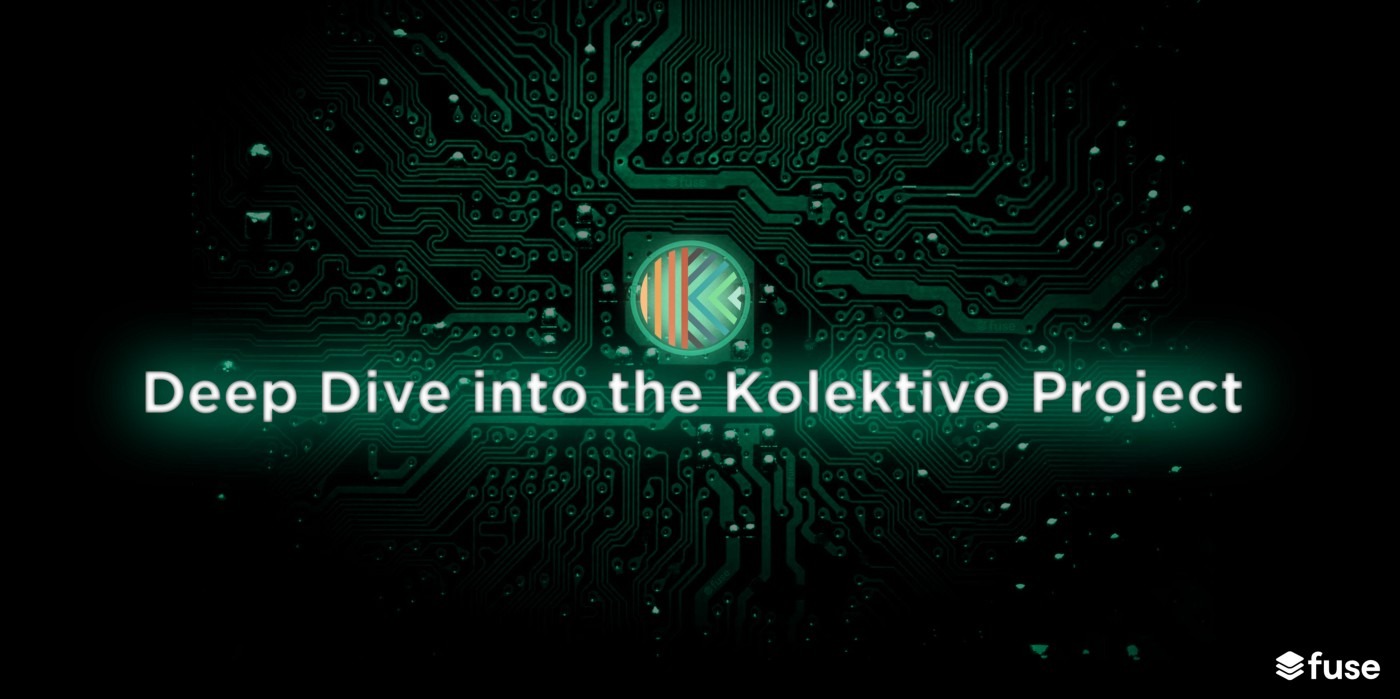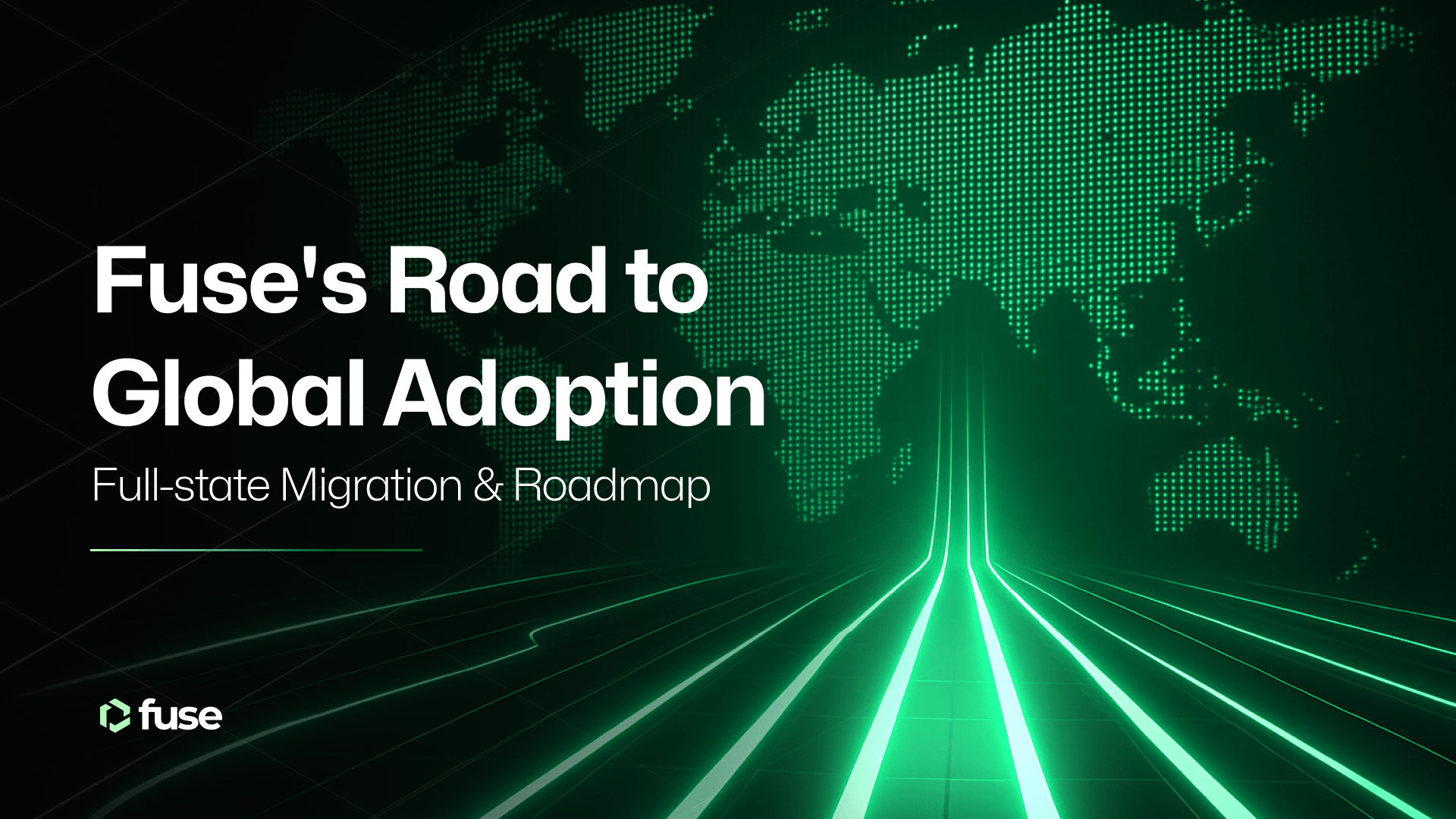Fuse’s success at realizing its vision ultimately depends on the development and growth of its payment-centric communities. One of the prominent such communities in our ecosystem is Kolektivo (formerly, CuraDAO), a project working on creating regenerative economies on the Caribbean island of Curaçao.
One of the key initiatives pursued by Kolektivo is the CuraDAI payment system that consists of the CuraDAI stablecoin and the homonymous mobile wallet forked from the Fuse white label wallet. The CuraDAI payment system is set to officially launch in July this year, and in anticipation of this important milestone, we decided to interview Kolektivo ecosystem developer Andy Kirchner to help make Kolektivo and CuraDAI more familiar to the Fuse community and beyond.
Thanks for agreeing to give us an interview, Andy. Let’s start with your personal story. Tell us a bit about yourself and how you came to be involved with Kolektivo.
Just like one of the founders of Kolektivo, Luuk, I’m from this tiny rock in the Caribbean, Curaçao. When the pandemic hit the island, Luuk and I reconnected after a two-year silence due to our other passion projects. Luuk is in the tech and innovation industry and I am in the sustainability and social sector. I only knew about blockchain and cryptocurrencies from the headlines in the news, but thanks to the predecessor of Kolektivo (CuraDAO) I was granted a small amount of ETH to work on a project, and I was hooked.
In 2012, I was paralyzed after a life altering accident and worked myself from a wheelchair to a (struggling) social entrepreneur. During our first lockdown in March 2020, I saw my business, heavily reliant on tourism, go under. Kolektivo gave me the opportunity to use my experience and skills to go out into the world and see how we can make a difference using blockchain technology and cryptocurrencies, and I haven’t looked back since. You can learn more about my story in my TEDx Aruba talk.
Now, let’s focus on the Kolektivo project. Its stated mission is to promote regenerative economies, what exactly does this mean?
Sustainability has been an industry model for the past decades or so, however being sustainable is often seen as “keeping your head above the water” or just doing what is necessary. Sustainability is more about survival while the regenerative approach is about thinking in terms of abundance.
What if we can create something that continues to create more and more, with financial, personal and communal health and wellbeing as a business model?
You can do that with an economy by funding regenerative projects like a food forest, but also with art or education. Creating a regenerative economy means changing mindsets from thinking in terms of limited resources to embracing abundance. Instead of taking all of the profits, let’s invest back in a project, so we regenerate it. It’s the simplest thing, and the right thing to do. I think it’s something we forgot along the way as we grew more corporations instead of business owners.
As I understand, Kolektivo is only or mainly active on the island of Curaçao? Does the island have particular advantages for pursuing the kind of projects Kolektivo is after? Is Kolektivo planning to expand to places outside Curaçao in the future?
Curaçao is a small island as far as the surface area is concerned, but rich in possibilities and diverse in communities. Most of us speak four languages here, and we are a Caribbean hub between South and North America and Europe, where we are part of the Dutch Kingdom. This opens many doors to us and most professionals easily adapt to other (sub)cultures, which is in our favor when we are ready to expand.
Once Kolektivo gets too big for the island, we have many neighbor islands we can expand to. Curaçao used to be part of the Netherlands Antilles, 6 islands (Aruba, Bonaire, Curaçao, Saba, Sint Maarten and Sint Eustatius) all very different, but with a certain cultural root which makes it easier to adapt Kolektivo to those islands’ needs. The connections are there, the will is there, now we have to do the (regenerative) work.
Kolektivo uses Fuse Network to power the CuraDAI project. Can you explain to our readers what CuraDAI entails and what it is supposed to achieve?
CuraDAI is a local stable coin developed for seamless payments on the island for our projects and future users and merchants. It can be used to pay for products or services and can exist in parallel with the official local currency, the guilder. One CuraDAI carries the same value as a guilder. The benefit of CuraDAI is that the payment is received within seconds, even if a user is in another country.

With CuraDAI, our participants can receive their fair share of what they earned from their involvement in, for example, the food forest, and do groceries at one of the local supermarkets. The vision is to create a regenerative economy that puts local products on the market, with local people and local payments.
How is the stable peg between CuraDAI and the Antillean Guilder assured?
The Antillean Guilder is legally pegged to the U.S. Dollar at a 1.79 Guilder-Dollar ratio. This makes it easy to use the DAI stablecoin to create the CuraDAI stablecoin pegged to the Guilder. Each CuraDAI unit only needs to be backed by around 0.56 DAI to be equivalent in value to one Guilder.
Are there already people who have shown interest in using the CuraDAI app and stablecoin? How many people in Curaçao do you hope to get to use CuraDAI?
CuraDAI has been in beta for over a year and a half now and we have seen the interest grow. After a series of grassroots workshops we gained a substantial amount of users. We are in a unique position because our island is not well-served by major financial institutions, so the market is desperate for alternatives. Our trials have shown how well the CuraDAI app functions and as the interest of the people in cryptocurrencies increases, it will be easy to onboard them with their enthusiasm.
We, again, live in a unique position, because many of our native island inhabitants live or have family across the world. It’s part of island life. So as the ease of sending money to your relatives has only increased over the years, we believe that we can reach deep into our community and our diaspora.
We understand that CuraDAI already has a network of merchants who are prepared to accept the stablecoin payments via the app. Please, talk a bit about who they are and what benefits they hope to incur.
Yes, this is so exciting! Because I personally engage with (mostly small) business owners and merchants, the list is growing rapidly. They all carry a phone anyway, so what’s easier than to show your QR code and instantly receive your payment? The excitement is really building and as we organize more workshops, more will join. One local supermarket, Esperamos, for example, already accepts CuraDAI, and that is where you need to start. Everyone needs something from a supermarket, so building a user base around that is fairly simple and fun. Iyengar Wellness, for example, is a holistic health and wellness practitioner who participated in a grant round of Kolektivo and makes local herbal teas, all natural soap and essential oils from locally resourced products and accepts payments in CuraDAI. We have had legal services, business consultants, coaches and therapists joining in the past months, even during two severe lockdowns. Now that we have opened up our streets again, a mobile car washing service, Top Notch Car Wash is joining the community as well and as they do, we coach them to also improve their sustainable business practices for the local and tourist market.

This is just the beginning, thanks to the COVID-19 pandemic people are looking forward to building things up, embracing technology but also to reconnecting with our own community. This is the moment to work on the collective by offering guidance and ease of use while rebuilding our economy in a more sustainable way, a regenerative way.
What is the short- and long-term roadmap for CuraDAI?
We started our grassroots movement by holding workshops about blockchain and cryptocurrencies, and it quickly grew beyond that. We partnered with local companies to educate our community as much as possible about the possibilities of blockchain technology. We won’t stop there, we are creating a food forest, funded via NFTs with which we can gather data about food production on the island and really calculate what the possibilities are. We are developing a local social media on which CuraDAI is going to function as a reward system. Doing good has never been so profitable, and we are building an economy with it.
As a tourist destination, we hope many people will visit Curaçao soon again and tell the story of Kolektivo, a collective of passionate people, each with their own specialty, who helped build a regenerative economy.
Follow our social media channels to stay updated on recent news and developments at
.svg)
.svg)











